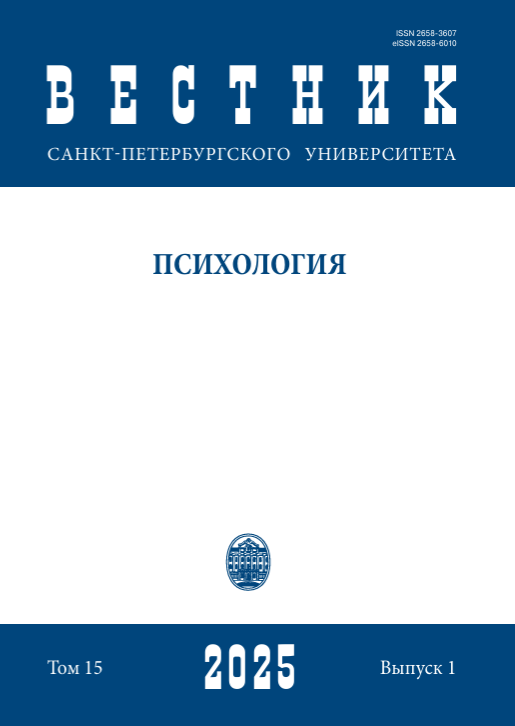Cognitive theories of time perception
DOI:
https://doi.org/10.21638/spbu16.2025.103Abstract
The problem of time perception in psychology and cognitive science has occupied the minds of scientists since the beginning of the last century. At first, the perception of time was considered primarily as a physiological process caused by metabolism and the work of the so-called "biological clock". In the future, however, the focus of consideration shifted to cognitive theories, the first of which was the well-known theory of the amount of information by R. Ornstein. However, if this theory, along with cognitive attentional theory, is familiar to the Russian-speaking scientific community, then a number of other, more modern models are undeservedly ignored. Accordingly, any development of this field of knowledge and the possibility of conducting empirical research is hindered due to the lack of a topic of time perception in the domestic psychological discourse. In this scientific article, for the first time in Russian, we review all the key cognitive theories and models of time perception. We distinguish 2 groups of such theories: the theory of retrospective and prospective assessment. Among the theories of retrospective assessment, the following are presented for discussion: the theory of the amount of information, the model of contextual changes, the segmentation model and the most recently introduced metacognitive model, and among the theories of prospective assessment are pacemaker theory, scalar expectation theory, oscillator and multiple oscillator models, as well as the attention gate model. In conclusion, our review discusses the differences between the theoretical positions underlying these models, the boundaries and conditions of their applicability. The ways in which further development of the field of studying the mechanisms of time perception can be advanced in order to build an integrated theory of time perception that combines neurophysiological mechanisms, cognitive processes and behavioral manifestations are also discussed. The high practical importance of time perception research is also noted. This article is addressed to a wide range of readers, but it will be of interest, first of all, to specialists in the field of cognitive science.
Keywords:
time perception, subjective time, cognitive psychology, retrospective time estimation, prospective time estimation, attentional gate model, contextual change model, scalar expectancy theory
Downloads
References
References
Downloads
Published
How to Cite
Issue
Section
License
Articles of "Vestnik of Saint Petersburg University. Psychology" are open access distributed under the terms of the License Agreement with Saint Petersburg State University, which permits to the authors unrestricted distribution and self-archiving free of charge.




